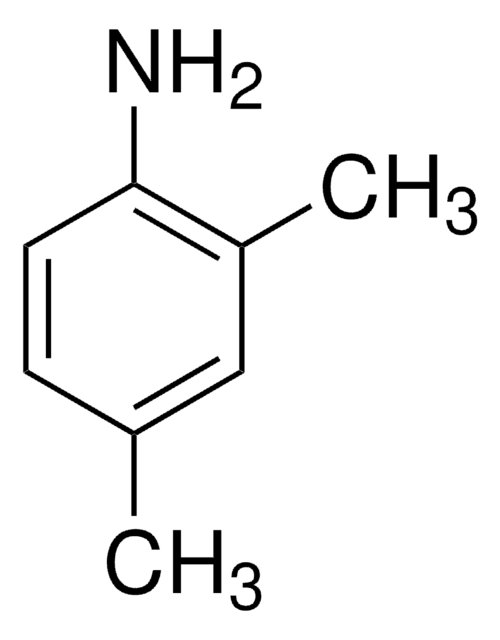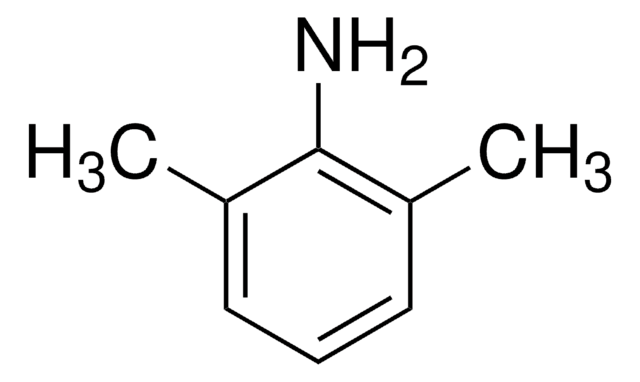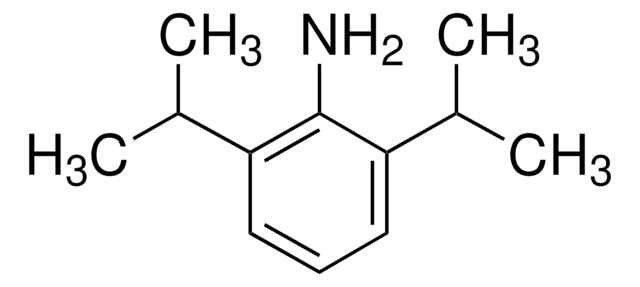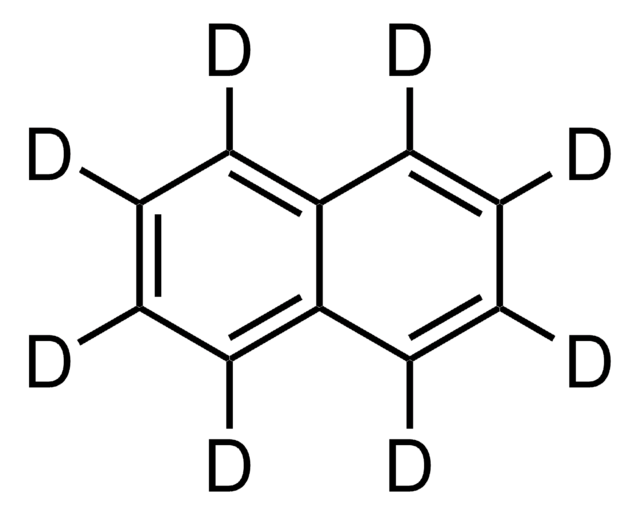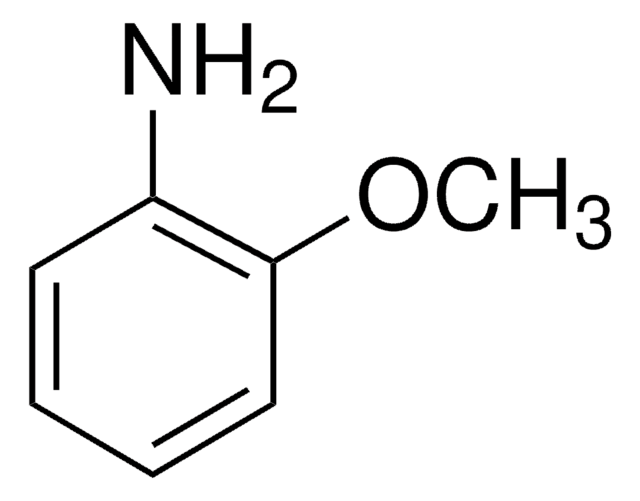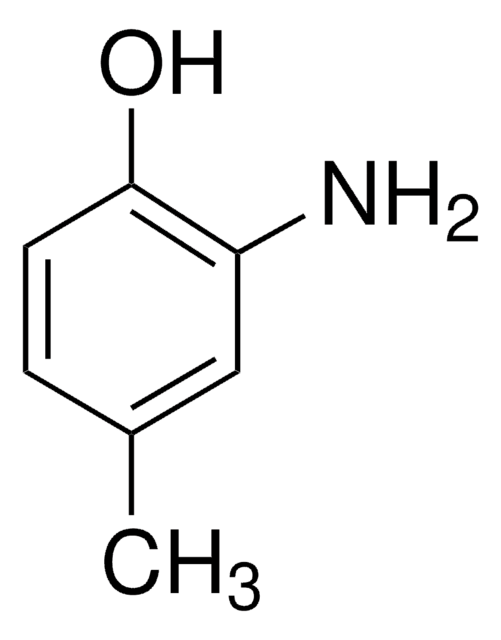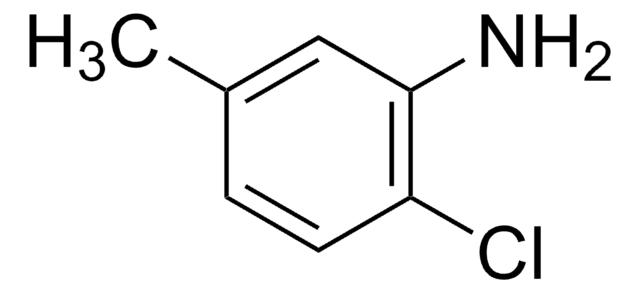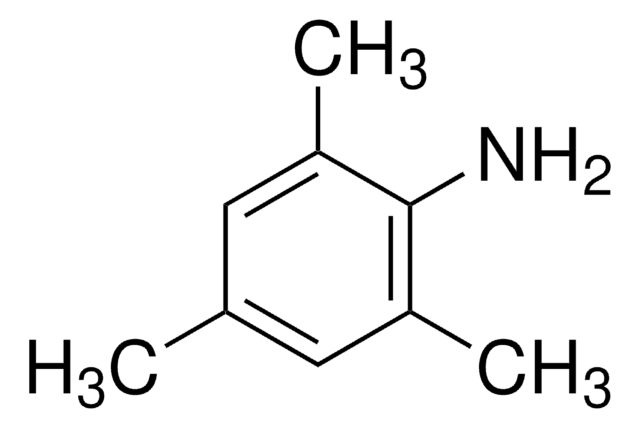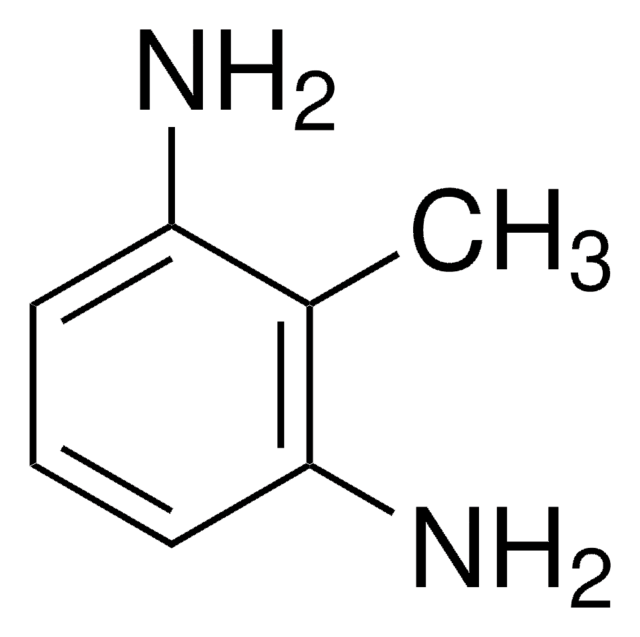301493
2,4-Dimethylaniline
98%
Sinonimo/i:
1-Amino-2,4-dimethylbenzene, 2,4-Xylidine, 4-Amino-m-xylene
About This Item
Prodotti consigliati
Densità del vapore
4.2 (vs air)
Tensione di vapore
0.16 mmHg ( 25 °C)
Saggio
98%
Stato
liquid
Temp. autoaccensione
860 °F
Limite di esplosione
7 %
Indice di rifrazione
n20/D 1.558 (lit.)
P. ebollizione
218 °C (lit.)
Punto di fusione
−14.3 °C (lit.)
Densità
0.98 g/mL at 25 °C (lit.)
Stringa SMILE
Cc1ccc(N)c(C)c1
InChI
1S/C8H11N/c1-6-3-4-8(9)7(2)5-6/h3-5H,9H2,1-2H3
CZZZABOKJQXEBO-UHFFFAOYSA-N
Cerchi prodotti simili? Visita Guida al confronto tra prodotti
Descrizione generale
Avvertenze
Danger
Indicazioni di pericolo
Consigli di prudenza
Classi di pericolo
Acute Tox. 3 Dermal - Acute Tox. 3 Inhalation - Acute Tox. 3 Oral - Aquatic Chronic 2 - STOT RE 2
Codice della classe di stoccaggio
6.1A - Combustible acute toxic Cat. 1 and 2 / very toxic hazardous materials
Classe di pericolosità dell'acqua (WGK)
WGK 3
Punto d’infiammabilità (°F)
208.4 °F - closed cup
Punto d’infiammabilità (°C)
98 °C - closed cup
Dispositivi di protezione individuale
Eyeshields, Faceshields, Gloves, type ABEK (EN14387) respirator filter
Scegli una delle versioni più recenti:
Possiedi già questo prodotto?
I documenti relativi ai prodotti acquistati recentemente sono disponibili nell’Archivio dei documenti.
Il team dei nostri ricercatori vanta grande esperienza in tutte le aree della ricerca quali Life Science, scienza dei materiali, sintesi chimica, cromatografia, discipline analitiche, ecc..
Contatta l'Assistenza Tecnica.